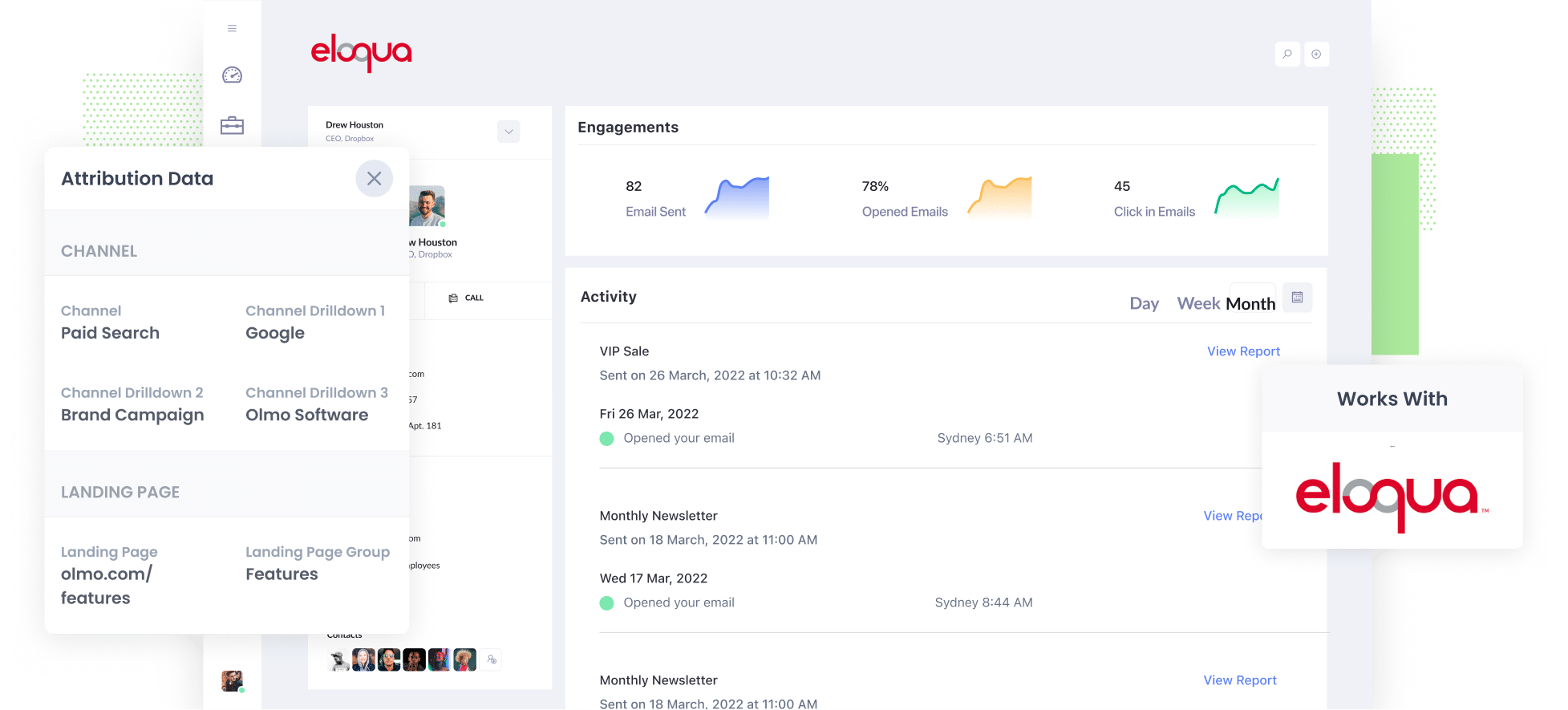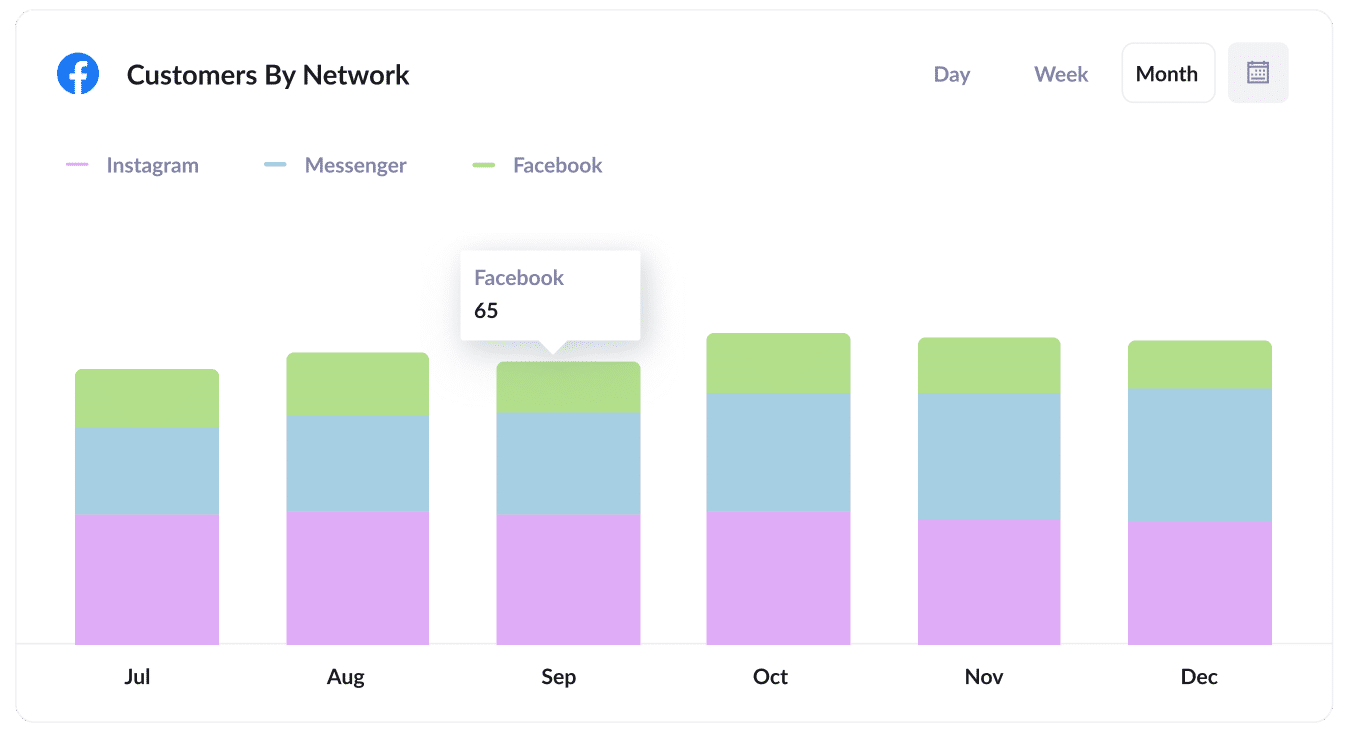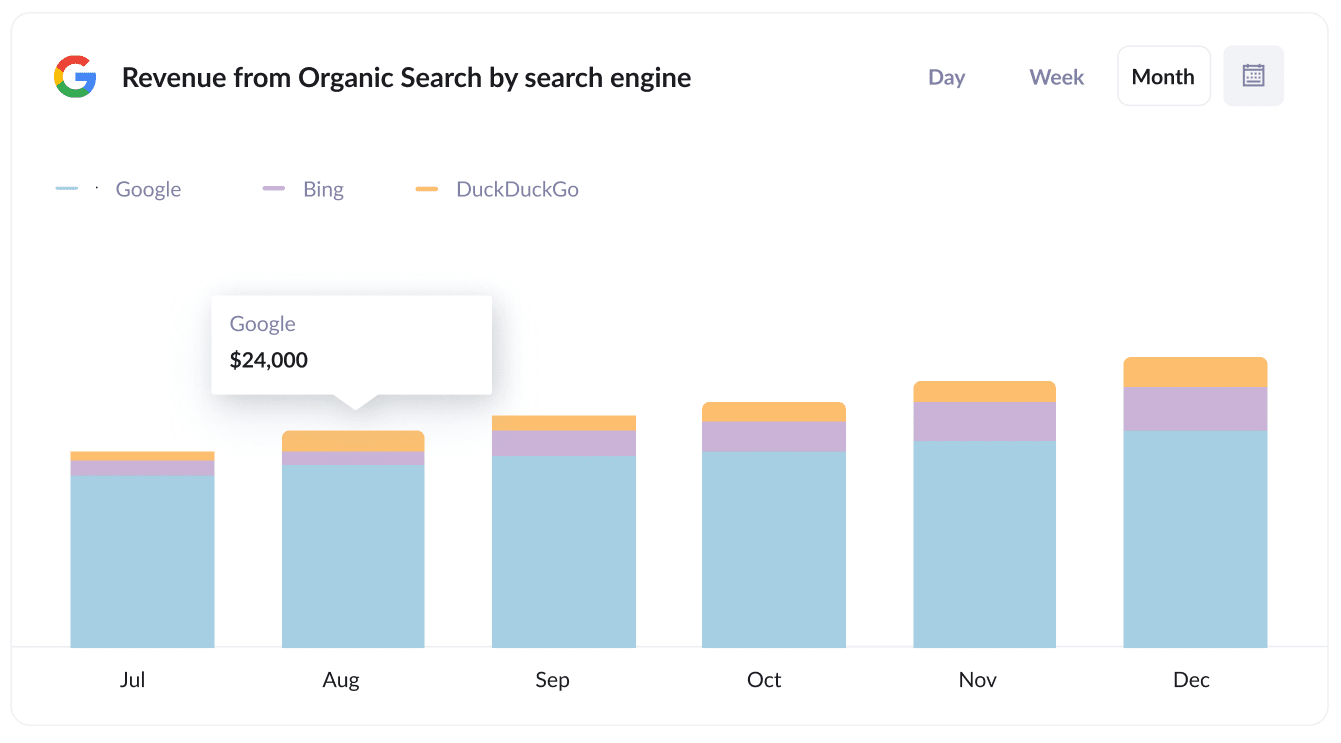How to integrate Google Analytics data into Eloqua
Learn how to integrate Google Analytics data into Eloqua, so you can see how many leads & customers you get from your various marketing campaigns (I.e. Google Ads, Facebook Ads, SEO, etc)

Do you wish you could see how many leads & customers you’re getting from your various marketing campaigns (as opposed to just clicks and website visitors)?
Tools like Google Analytics are good for telling you where your website visitors are coming from, but unless you're an eCommerce business that sells products through your website, they can’t really tell you the amount of leads, customers & revenue you got.
There is a solution though.
In this article, we'll show you how to use a tool called Attributer to send Google Analytics data into Eloqua so you can see exactly where your leads & customers are coming from.
4 steps for integrating Google Analytics data into Eloqua
Attributer makes it super simple to get Google Analytics data into Eloqua. Here's how to do it in 4 easy steps:
1. Install Attributer and add hidden fields to your forms

The first thing you need to do is sign up for a 14-day free trial of Attributer.
Once in your account, you’ll get given a little snippet of code to add to your website.
The way you do it varies depending on what website builder you are using (I.e. WordPress, Webflow, custom-coded, etc), but step-by-step instructions can be seen here.
After adding the code, you then need to add a series of hidden fields to your lead capture forms. The following fields need to be added:
- Channel
- Channel Drilldown 1
- Channel Drildown 2
- Channel Drilldown 3
- Landing Page
- Landing Page Group
Most form-building tools (like Eloqua forms, Gravity Forms, Typeform, Jotform, etc) make it easy to add hidden fields, and step-by-step instructions for your chosen form builder can be found here.
2. Attributer automatically completes the hidden fields with Google Analytics data

Attributer will now start to track where each of your website visitors have come from and then when they complete a form on your website, it populates the hidden fields with Google Analytics data.
To illustrate, imagine you’re in the marketing team at Asana (the project management software) and someone clicks one of your ads and fills out a form on your site.
Depending on what UTM parameters you put behind your ads, it would populate the hidden fields as follows:
- Channel = Paid Search
- Channel Drilldown 1 = Google
- Channel Drildown 2 = Brand Campaign
- Channel Drilldown 3 = Asana
On top of the information on how the visitor got to your site, it would also capture the visitor's landing page (I.e. asana.com/features/task-management) and the first landing page group (I.e. Features)
3. Google Analytics data is passed into Eloqua

When the visitor submits the form on your website, all of the Google Analytics data that Attributer wrote into the hidden fields is sent into Eloqua along with the information the lead entered into the form (such as their name, email, phone number, etc).
4. Run reports to know what channels are driving leads, customers & revenue

Finally, with the Google Analytics data in Eloqua on every contact record, you can then use it to run reports in your chosen reporting tool (I.e. Eloqua reports, Salesforce, Tableau, Looker, etc).
You should be able to see what channels are bringing the most leads, which Google Ads campaigns are generating the most customers, how much revenue you are getting from your Facebook Ads, and much more.
What is Attributer?
From the above steps, you've probably worked out that Attributer is a tool that can send Google Analytics data into Eloqua. But how exactly does it work?
Essentially, Attributer is a small bit of code you add to you company website.
When soma visitor arrives at your site, it determines where the visitor came from (using the same methodology Google Analytics does) and then categorizes the visitor into a series of (the same one's Google Analytics uses, like Paid Search, Paid Social, Organic Search, etc).
It then stores the data in a cookie in the visitor's browser so that the data gets remembered as the user browses around your site (or even if they leave and come back late).
Finally, when the visitor submits a form on your website, Attributer writes the Google Analytics data into the hidden fields and it is sent into Eloqua.
It was originally built by a marketing consultant who needed a way to track how many leads & customers his efforts were generating for his clients, but fast forward a few years and Attributer is now used on thousands of websites and tracks over 8 million visitors to those websites each month.
What data gets passed into Eloqua
Attributer passes the following information in Eloqua each time a visitor submits a form on your site:
1. Marketing Channel Data
Attributer automatically passes through the channel they came from (I.e. Paid Search, Paid Social, Organic Search) as well as further detail on each channel (I.e. For Paid Search, it also captures the Campaign, Ad Group, Keyword, etc)
So for instance, if someone came from one of your Google Ads it might pass in the following data (depending on what you put in the UTM parameters you put behind your ads):
- Channel = Paid Search
- Channel Drilldown 1 = Google (or whatever was in the utm_source parameter)
- Channel Drilldown 2 = Brand Campaign (or whatever was in the utm_campaign parameter)
- Channel Drilldown 3 = Asana (or whatever was in the utm_term parameter)
Alternatively, if someone comes to your site from an organic Google search, it might write in the following:
- Channel = Organic Search
- Channel Drilldown 1 = Google
- Channel Drilldown 2 = google.com (or whatever Google domain it was)
- Channel Drilldown 3 = Asana (or whatever keyword they used, where available)
2. Landing Page Data
Attributer automatically captures the first page the lead sees on your site (I.e. asana.com/blog/best-task-management-software) as well as the category of the page (I.e. Blog).
This allows you to report on how many leads & customers you're getting from certain sections of your site as a whole (I.e. your blog) as well as drill down into how many leads & customers each individual blog post generated.
3 example reports you can run when you integrate Google Analytics data into Eloqua
Before founding Attributer, I ran marketing & analytics teams at various companies for 15 years and spent millions of dollars on paid ads. I also ran hundreds of reports to track how those ads were performing.
Below are some of my favourite reports (that you should be able to run when you capture Google Analytics data with each new lead in Eloqua):
1. Leads by Channel

This report shows the number of leads you’re getting from each channel (I.e. Paid Social, Paid Search, Organic Search, etc).
It gives you a high-level overview of what's working, what isn't and what you can do to get more leads.
For instance, if you are getting most of your leads from Paid Search but spending most of your budget on Paid Social (which isn’t uncommon), then you might want to revisit your budget allocation.
2. Customers by Facebook Ads Network

If you are running ads on Facebook, then chances are those ads are also appearing on Meta’s other properties (i.e. Instagram, Messenger, Whatsapp).
If that’s the case, then this report (which shows how many customers you’ve got from your ads on each network) can help you understand where your ads are performing best (and subsequently where you should be investing more time and budget to get more customers).
3. Revenue from Organic Search by search engine

If you’re investing money into SEO (link building, technical SEO, content creation, etc) then the above chart can help you understand how much new revenue is being generated from those efforts.
This can help you prove the value of your SEO efforts and potentially get more budget for it (which is notoriously hard to do given the longer time to impact SEO initiatives usually have).
Wrap up
If you’re looking for a way to track which channels & campaigns are generating the most leads and customers for your business, then using Attributer with Eloqua could be a great solution.
It will pass Google Analytics data through to Eloqua each time a lead submits a form on you website, and you can then use that data to run reports that show which channels are driving the most leads, how many customers you’re getting from each Google Ads campaign you’re running, and a whole lot more.
Best of all, it's free to get started and usually takes less than 15 minutes to get set up, so start your 14-day free trial today!
Get Started For Free
Start your 14-day free trial of Attributer today!

About the Author
Aaron Beashel is the founder of Attributer and has over 15 years of experience in marketing & analytics. He is a recognized expert in the subject and has written articles for leading websites such as Hubspot, Zapier, Search Engine Journal, Buffer, Unbounce & more. Learn more about Aaron here.
